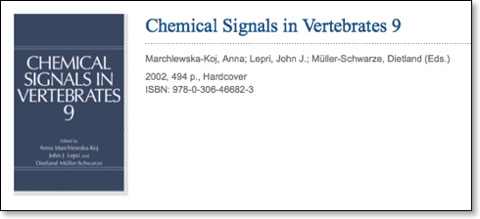MUP heterogeneity

Payne, C.E., Malone, N., Humphries, R., Bradbrook, C., Veggerby, C., Beynon, R.J. & Hurst, J.L. (2001) Heterogeneity of major urinary proteins in house mice: population and sex differences. . In: Chemical Signals in Vertebrates (Ed. A. Marchlewska-Koj, D. Muller-Schwarze & J. Lepri) pp233-240. Plenum Press, New York.
The complex expression patterns of major urinary proteins (MUPs) in mice were first demonstrated by isoelectric focusing (IEF) in which different proteins are separated according to charge. Although more complex analyses are needed for detailed molecular characterisation (see Veggerby et al., this volume), IEF on immobilised narrow range ampholine plates provides a method for rapid analysis of MUP profiles. We have used IEF to compare MUP profiles from different populations of mice, to compare expression patterns between the sexes and to monitor development of expression patterns as animals reach sexual maturity. Recurrent themes from these analyses are a) that the pattern of MUPs in a single individual is complex, b) that although there is some sharing of MUPs within a population, most animals have different MUP profiles c) that the female expression pattern is as complex as that of the male, and d) that the development of expression shows evidence for staged activation of different MUP genes.